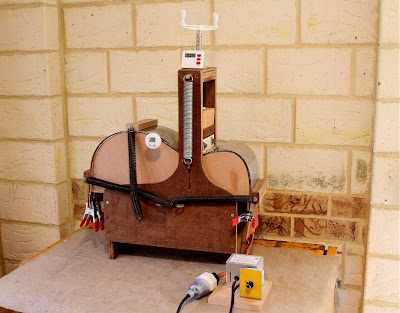I had time to daydream about guitar building over the last few months even if I didn't have opportunities to make progress in any practical sense. Among other things, my ruminations concerned construction of the neck in terms of how I might improve the design and produce more consistent results. Finally, with the university year over, I'm in a position to turn those thoughts into actions.
In keeping with my usual method, two knock-down bolts extend through the headblock into threaded plugs embedded in the neck tenon. Although this is a popular and proven design, I've come to realise that there's an inherent weakness: if the bolts are overtightened through the soundhole by an inquisitive or over-zealous owner for some unknown reason, there's a chance that the force they exert on the plugs could eventually split the neck at the extremity of the tenon. However remote this possibility might be, it seems prudent to provide some reinforcement. With that in mind, I've modified my routing jig so that the tenon it produces is narrower than it once was, the idea being that I can build it back up to the desired width of 20mm by gluing a 2mm layer of wood to either side of the tenon as shown in the picture below. Crucially, the grain direction of these outer layers is at right angles to that of the neck shaft which provides good protection against splitting.
I'd like to achnowledge the luthier who came up with this idea; if I could only remember who they are I'd certainly do so!
I'd like to achnowledge the luthier who came up with this idea; if I could only remember who they are I'd certainly do so!
I'll report on further improvements to my neck construction methods in an upcoming post.
Cheers
Pete




















